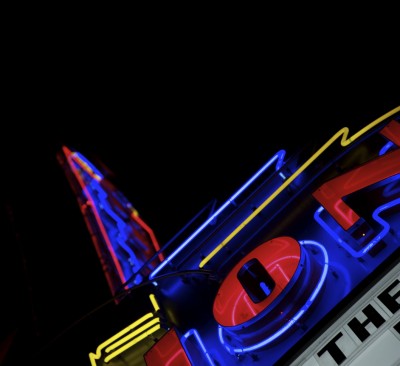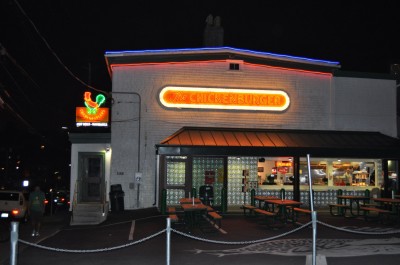A glaring need to respond
Given such trends, it is obvious these regulatory efforts to limit permissible sign brightness levels point to a glaring need for the sign industry to develop a comprehensive response to preserve the utility and visual impact of commercial signage. In an era of rapid technological change, this issue represents a key priority for both the sign industry at large and its entire community of commercial customers.
In April, ISA participated in the Lightfair International (LFI) Conference and Expo, the world’s largest annual architectural and commercial lighting trade show. The association’s goal was to continue to gather information and find new opportunities to help protect the ability of its members to thrive in the business of manufacturing and selling illuminated signs.

‘Dark Skies’ groups, especially, have lobbied for regulatory initiatives to restrict or control sign lighting at night. Photos courtesy ISA
This involved meeting with a variety of stakeholders in the industry, several of whom are ISA members themselves, and learning from lighting experts. From these discussions, it is apparent that as regulatory authorities and code-developing bodies intend to move forward with plans to mandate higher efficiency targets, lighting and signs are getting swept up in these efforts. More still needs to be done.
Defending signs
The proliferation of EMCs and digital billboards in recent years appears to represent one of the factors contributing to the general perception by local authorities that sign brightness needs to be regulated and controlled through lighting standards. And when these new standards are combined with broad efforts to substantially increase the energy efficiency of all types of electrical devices, it is inevitable traditional electric signs will come under scrutiny by government officials.
The sign industry must be prepared to meet this challenge, justifiably defending its products on the grounds they promote economic activity, enhance public safety and represent both a historic and a continuously innovative form of communication. With these benefits in mind, ISA has welcomed the opportunity to defend the notion that electric signs should continue to be effectively visible at night.
After all, the intrinsic value of an electric sign is closely linked to its ability to be readily detected and read in a variety of nighttime outdoor environments. Brightness or luminance is one of the key factors in determining how readily an electric sign is detected after dark. The faithful representation of company logos and corporate trademarks has a significant impact on the colour schemes displayed on translucent sign faces and the corresponding amounts of light emitted by those signs. Electric signs also are affected by other light-limiting factors that result from aging lamps and exposure to weather.

Electric signs are affected by light-limiting factors that result from aging lamps and exposure to weather.
In the past, the sign industry incorporated standardized types and configurations of fluorescent and neon light sources for the internal illumination of plastic-faced signs. These conventional light sources and standardized lamp or tube configurations were used successfully over several decades and their suitability for a broad range of locations and environmental conditions was well-established.
Wielding influence
Government officials, regulatory agencies and standards organizations around the world have worked to impose limits on sign illumination, but their efforts have often been arbitrary, without being based on objective evidence. Further, by not involving the counsel of the sign industry, there is a sizeable void in knowledge among key decision-makers. In many cases, authorities with jurisdiction over the historical and modern development of sign illumination lack pertinent information about that development.
This is why a significant opportunity now exists for the sign industry to influence the development of new regulations that will affect electric signs. With ISA’s ongoing technical research and SAC’s assistance in advocacy efforts, the industry can work to preserve the value of its products and, in so doing, promote a favourable business environment for the continued development, use and value of signs.
David Hickey is vice-president (VP) of government relations for ISA. For more information, visit www.signs.org.





